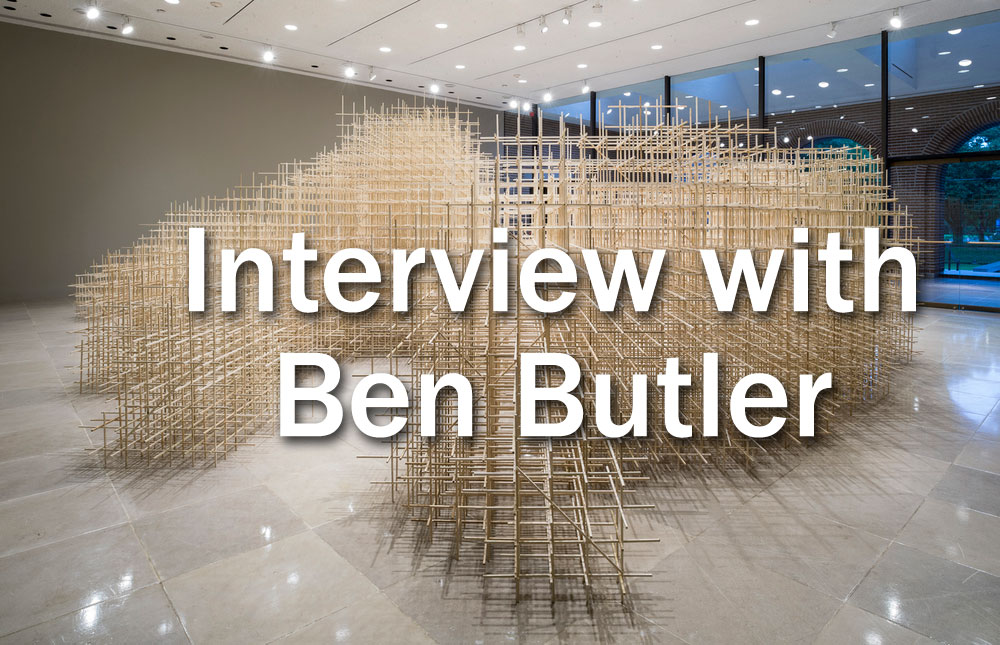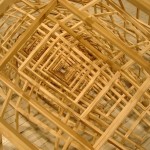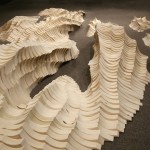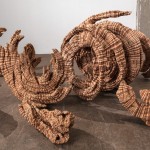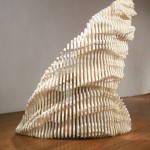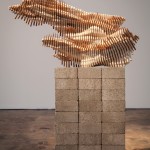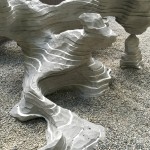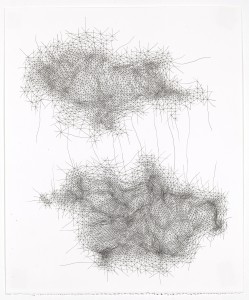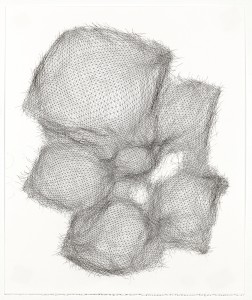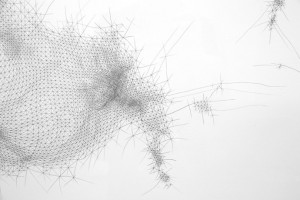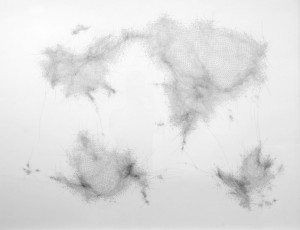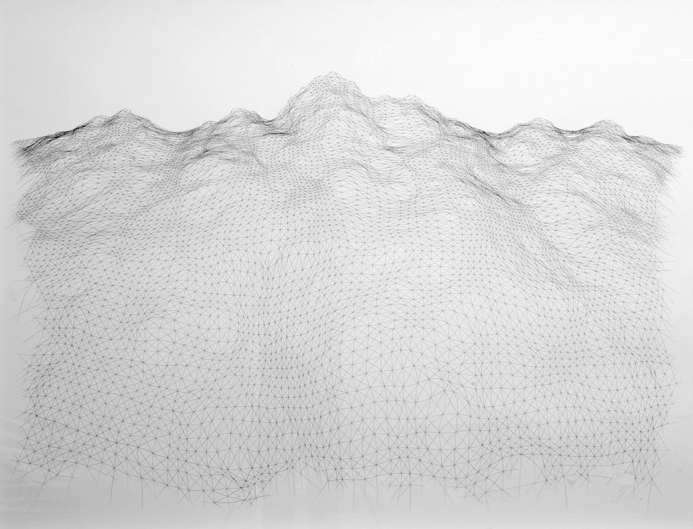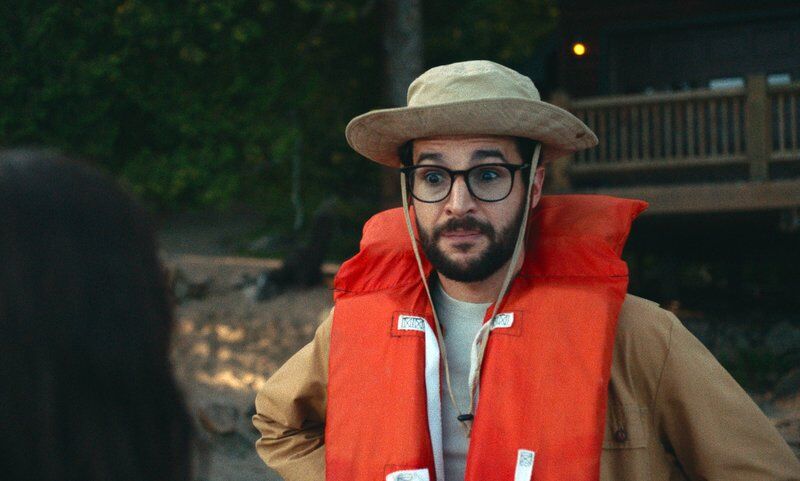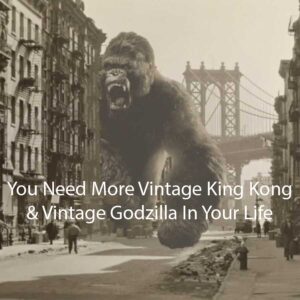Interview with artist Ben Butler
A couple months ago I popped flare about an artist that had just hit my radar named Ben Butler. And over the intervening time I’ve only fallen more in love with Ben’s work. But even more, I’ve come to enjoy Ben himself and his very kind and generous disposition. Even though he’s exceedingly busy right now transitioning away from teaching back to full time working on his art, he was able to take a ton of time out to answer my clueless questions. He was just a blast to talk to and to hear about how these just crazy cool pieces are constructed and brought to life.
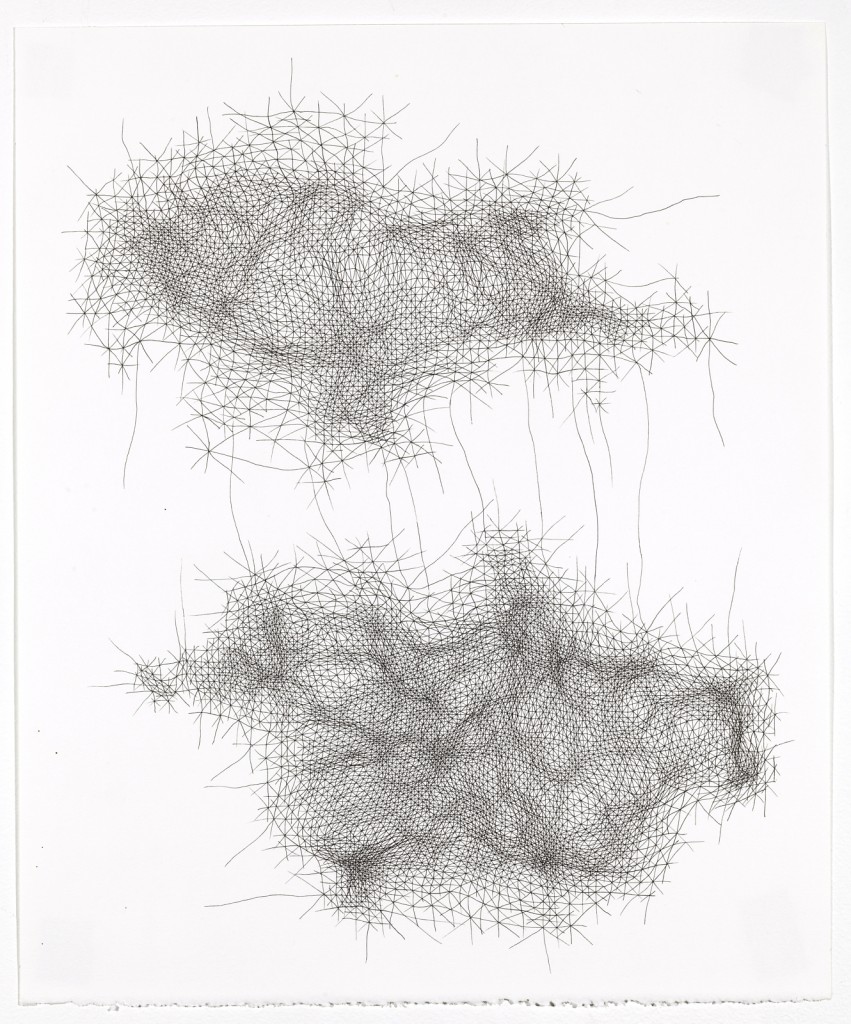
Ben – I am very much devoted to abstraction, to building things that are highly evocative but not namable. I deliberately avoid singular specific references in order to keep the work open and engaging, and also to reference larger, broader ideas. So I think the work naturally inspires dreaming and imagining. The scale of the work also facilitates this.
Taylor – You are prolific. I see so many of your pieces online that are so detailed and so very complicated. How long does it take you to physically create one of your pieces once you’ve designed it? I’m sure its impossible to answer this, but they seem basically impossibly crafted, I’m curious how long the impossible takes in your world! hahah.
Ben – I have come to realize that a finished, mature piece takes at least 1-2 years, and sometimes longer. I’m talking about the time span from the very first seed of an idea to a complete work in an exhibition. And I give it this time to grow, which means that I have several things going at once. I may spend about a month of intense work on a large piece as it starts to become resolved. There isn’t exactly a design process. In fact, I’m sort of anti-design. I build directly and learn about the material and the form intuitively. Eventually a system evolves that dictates how the piece is build, and I blindly and rigorously follow that system. Large pieces are usually highly systematized and very efficiently made. They come together pretty quickly considering how many parts they have.
Taylor – Do you do this full time? I see from your CV that you are also an assistant professor at Rhodes College. Since graduating from the Art Institute of Chicago has been your fulltime career mainly? I only ask because I’m jealous, and might hate you a little. hahaha. (Small joke. No really. I’m quite safe.)
Ben – I made my work full-time from the time I finished graduate school in 2003 until 2008. I did this by lowering my cost of living to almost nothing, and I think that period really helped me get my footing as an independent artist. I then taught full-time from 2008 to 2015 (finished in the Spring), and still managed to make a lot of work, but the balance was incredibly difficult. I just started making my work full-time again, and it’s going well.
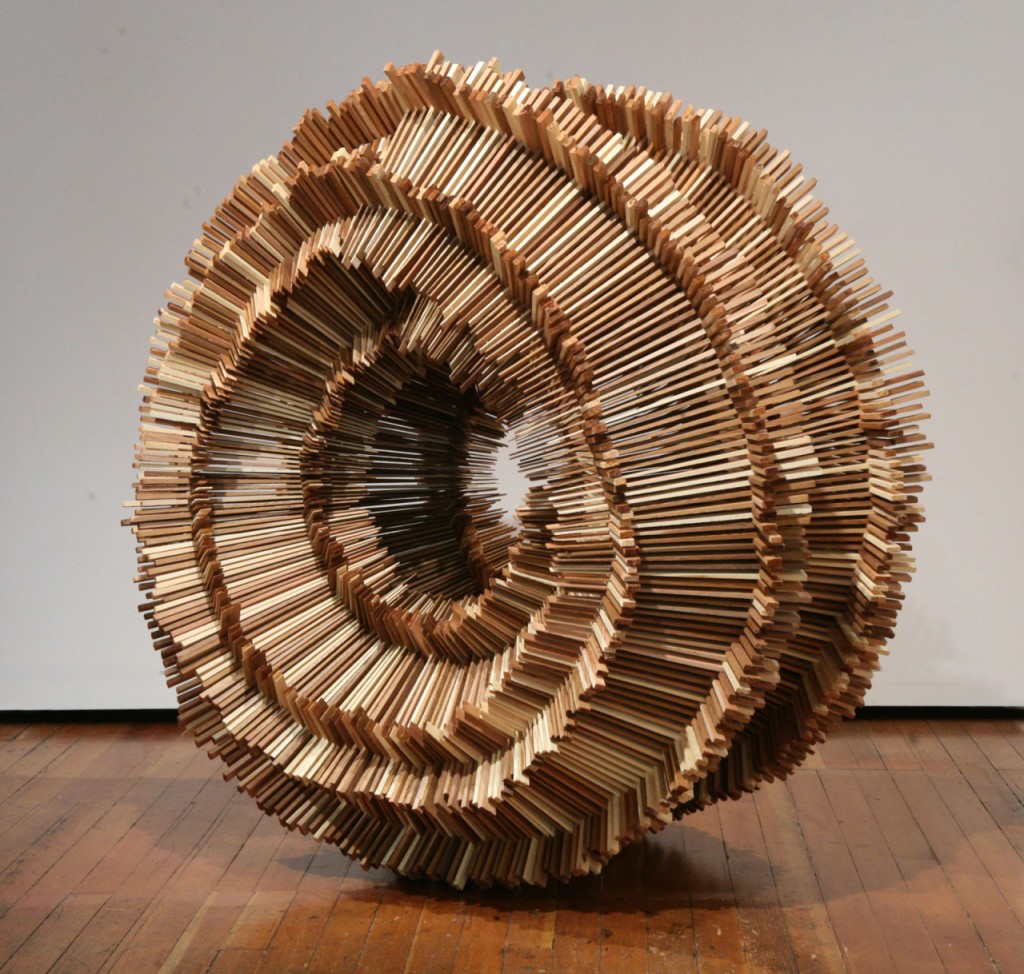
Ben – I don’t draw or plan, unless the work involves some logistical specifics, like a space of a particular size that I need to fill. I work directly with the material, but that’s not to say that I can imagine these forms and just build them intuitively. On the contrary, I stick to a rigid system that limits my decisions and dictates a particular way to build. The whole goal is to feel like I’m discovering something that is coming into being on its own, rather than designing and inventing. So the process is almost an inversion of a traditional design process. In my best work, the image of the form, the thing that is compelling, comes at the very end. It’s kind of like designing DNA and then watching to see what grows.
Taylor – You work mainly (solely?) in wood, why did you initially gravitate toward wood in the first place? And as a follow up, if you were to work in any other medium what would you prefer as backup?
Ben – I came to work with wood sort of by accident. As an undergraduate, I had the instinct to play with a lot of identical units, and plywood ripped into square sticks was a simple and cheap way to make a great versatile material. From then on, it seemed like a lot of my ideas lent themselves well to the versatility of wood. It’s both durable and malleable, and it is ideal for the kind of additive processes that I tend to use. I have also started casting a lot recently, in plaster and concrete. That work is still a bit young, but it is exciting.
Taylor – After pulling your art off the shelf again and doing more research I ran across a pen and ink drawing of yours that literally brought tears to my eyes it surprised me so. It’s your Invention #60?
Personally, I have been trying to develop a system for sketching topographical mappings of faces that was compelling, and this just screamed at me as a really beautiful and succinct solution to that sort of a problem. Do you have others scanned? (The #60 is taunting me, there are 59 more?!? haha.)
Ben – Thanks for the feedback. I have a lot of drawings online, if you haven’t found them yet – www.benbutlerart.com – under “drawings and prints”. Also, under “interviews”, there are a couple other videos that not only show a lot of process footage, but also feature me talking about my work (heavily edited so that I sound smart).
Taylor – I found a video you did that showed the construction of an installation piece for the Turchin Center? Really a fantastic piece(s?). Very organic and lofty in it’s scaling. The idea of sliced, bifurcated (multifarcated?), thick sheets stacked in this really gorgeously amebic sort of a way is really great. How can you possibly pre-assemble something like that in your studio that has to be so much smaller than the end museum location? Seems like a logistical nightmare to my little brain.
Ben – You asked about installing large pieces. I’ve done a few shows recently where the venue was in fact much larger than my studio. Basically, everything is modular, and I build a portion in my studio to see how it will work. Then I make a lot more unit or parts, bring them to the space, and work intuitively to create the larger installation.
Taylor – I really am excited about the opportunity for you and your work with your going back to it full time. That’s great for you. What would you say to those of us out here, that are managing day jobs, but would love to get a break that would allow us to go full time towards chasing a dream like this?
Ben – As for advice on making art full time – that’s a tough one. I know very few people who support themselves (let alone a family) on art alone, and I’m not even sure it will work out for me in the long-term. I think that my brief answer would be that you have to own the fact that you are not just an artist but a small business owner, and you have to make a lot of decisions that have the bottom line in mind. 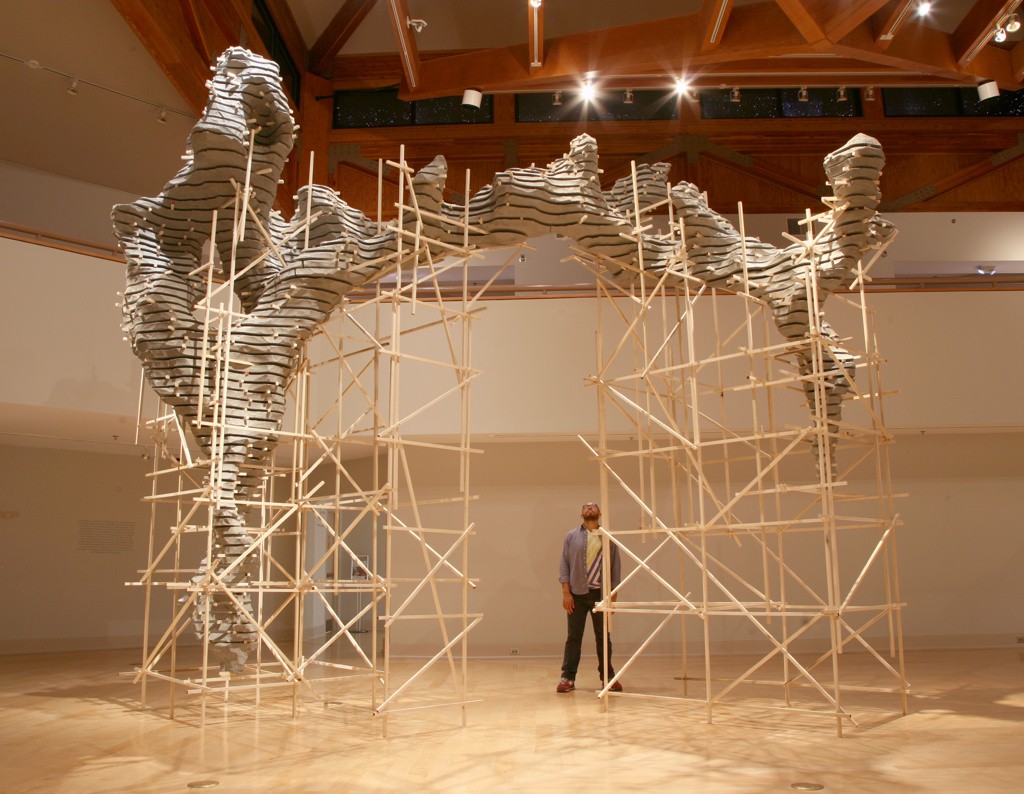
Taylor – Final question, non-art related – what do you do that gives you pleasure when not creating pieces of art?
Ben – Making music and making food, mostly. I’m really only happy when I am making things, and both of these mediums can be engaged more casually, with family and friends. They are also satisfyingly temporal. There’s a beauty in their impermanence that often seems to be missing in the studio.
—
And there you have it! Ben! Such a great time chatting with you over the past couple months. Thanks again for taking time out to share with us about your work and about your art. I personally think you are completely missing out by monetizing on your work and selling “Ben Butler Erector Set Art Kits”. But that’s why I’m doing what I do, and you are doing what you do! hahah. Thanks again mate. Really great chat.

